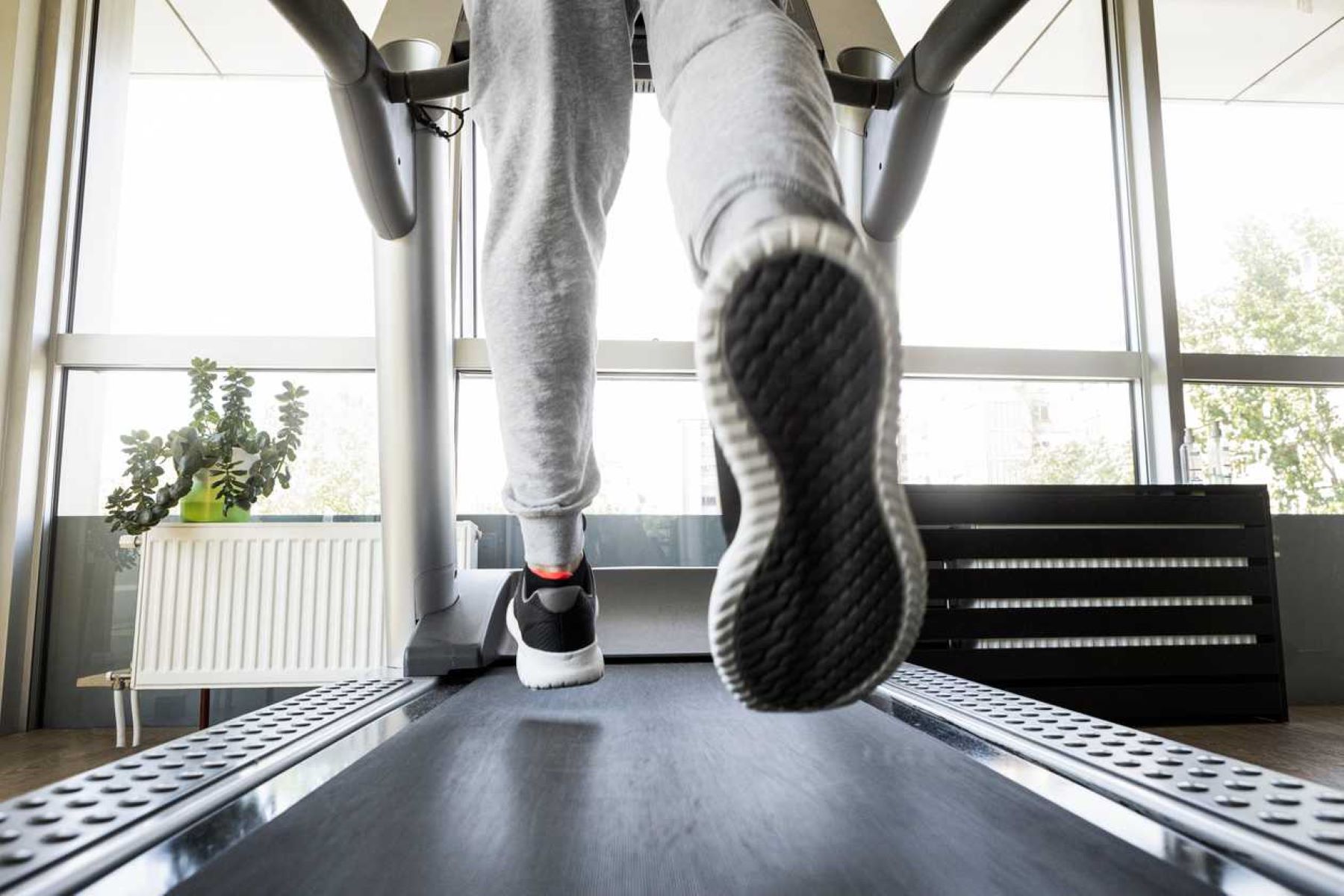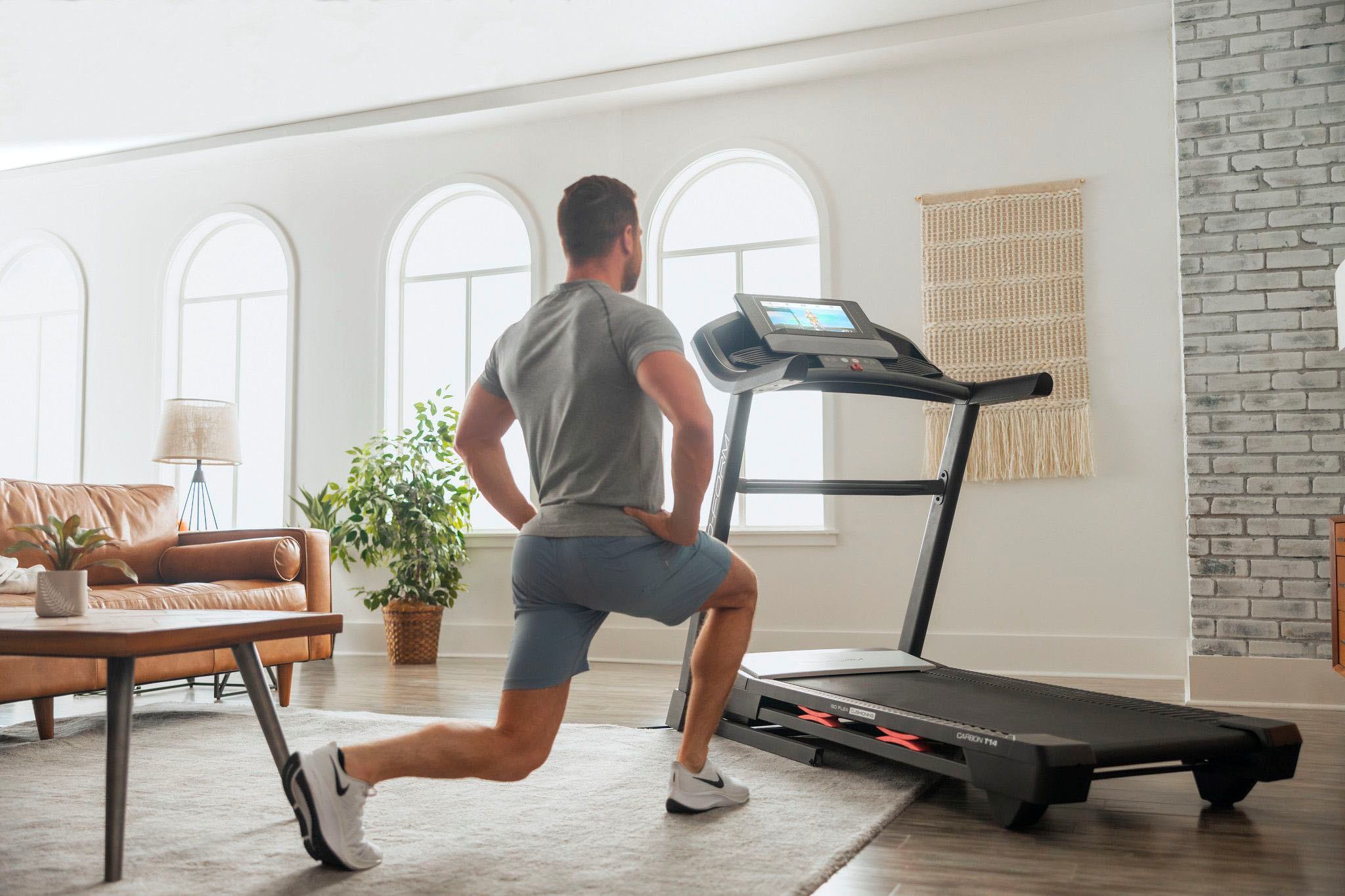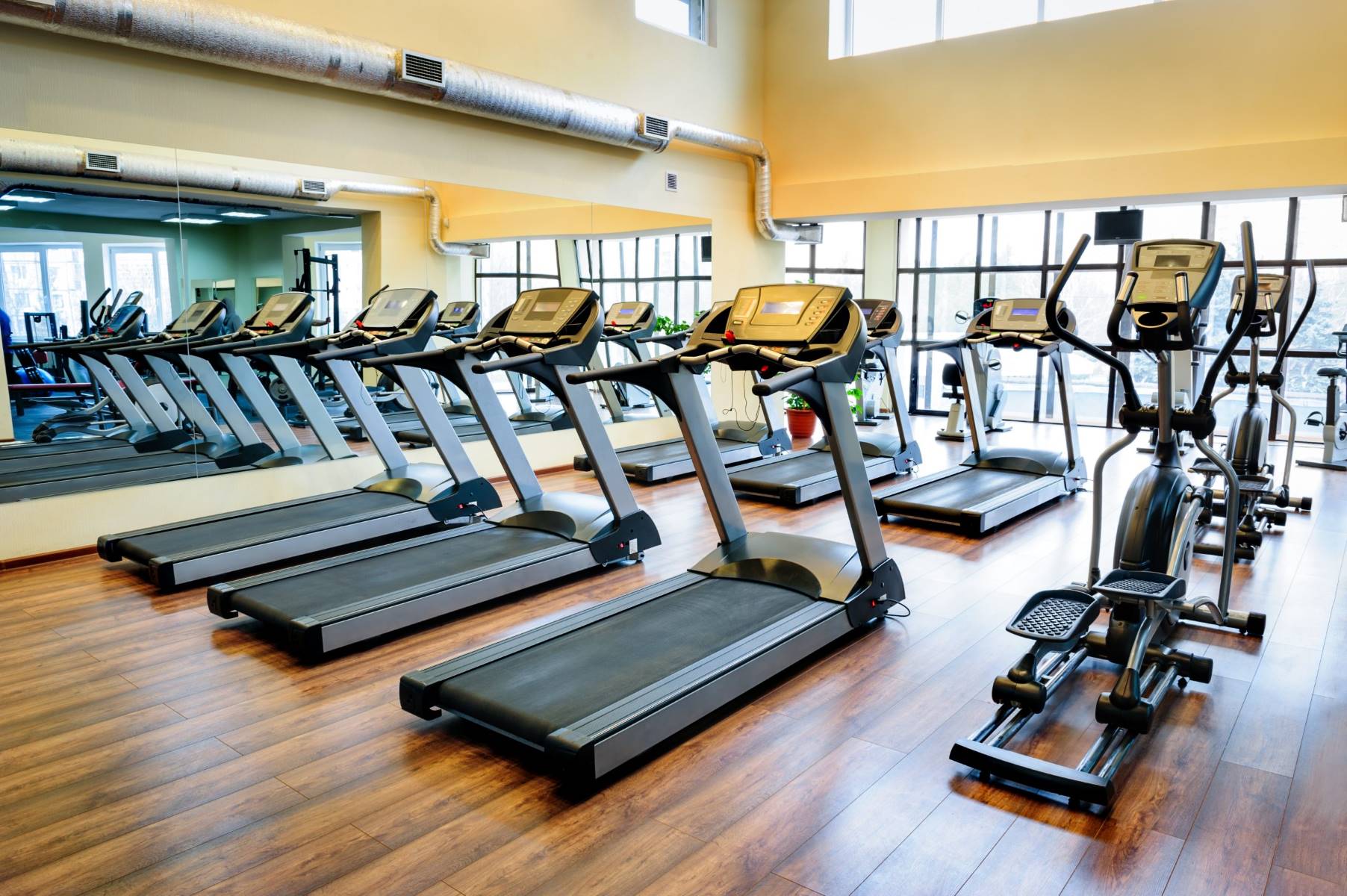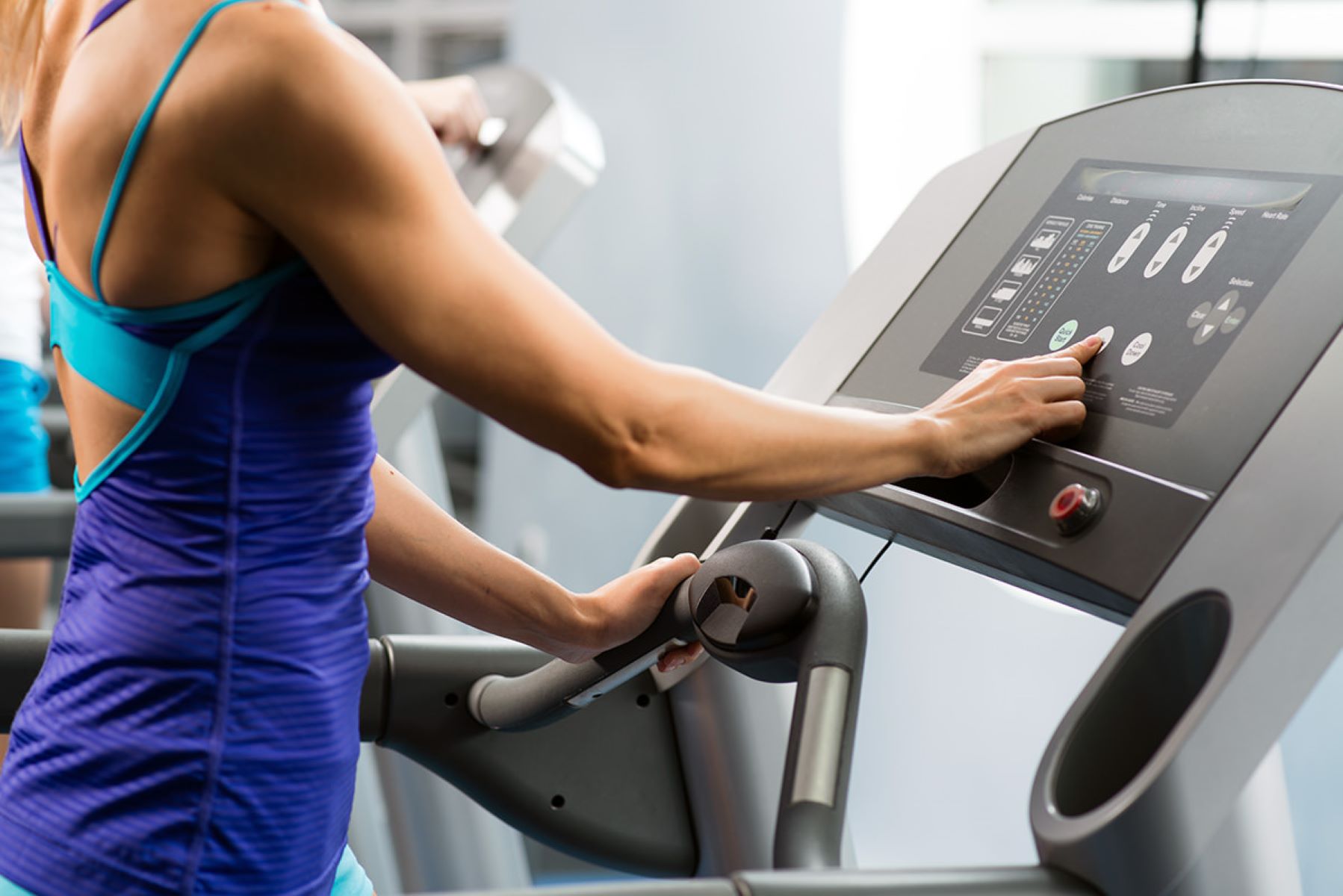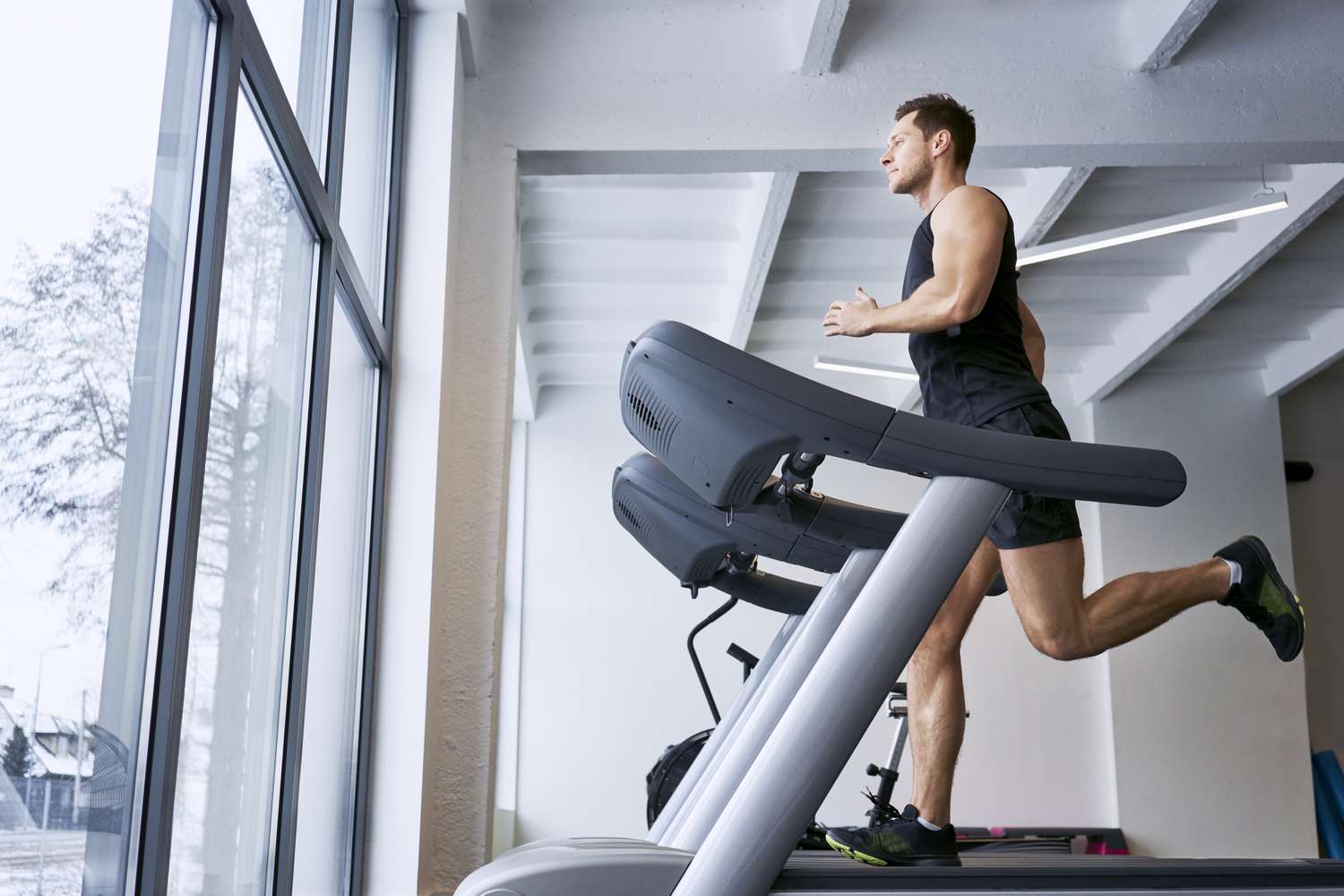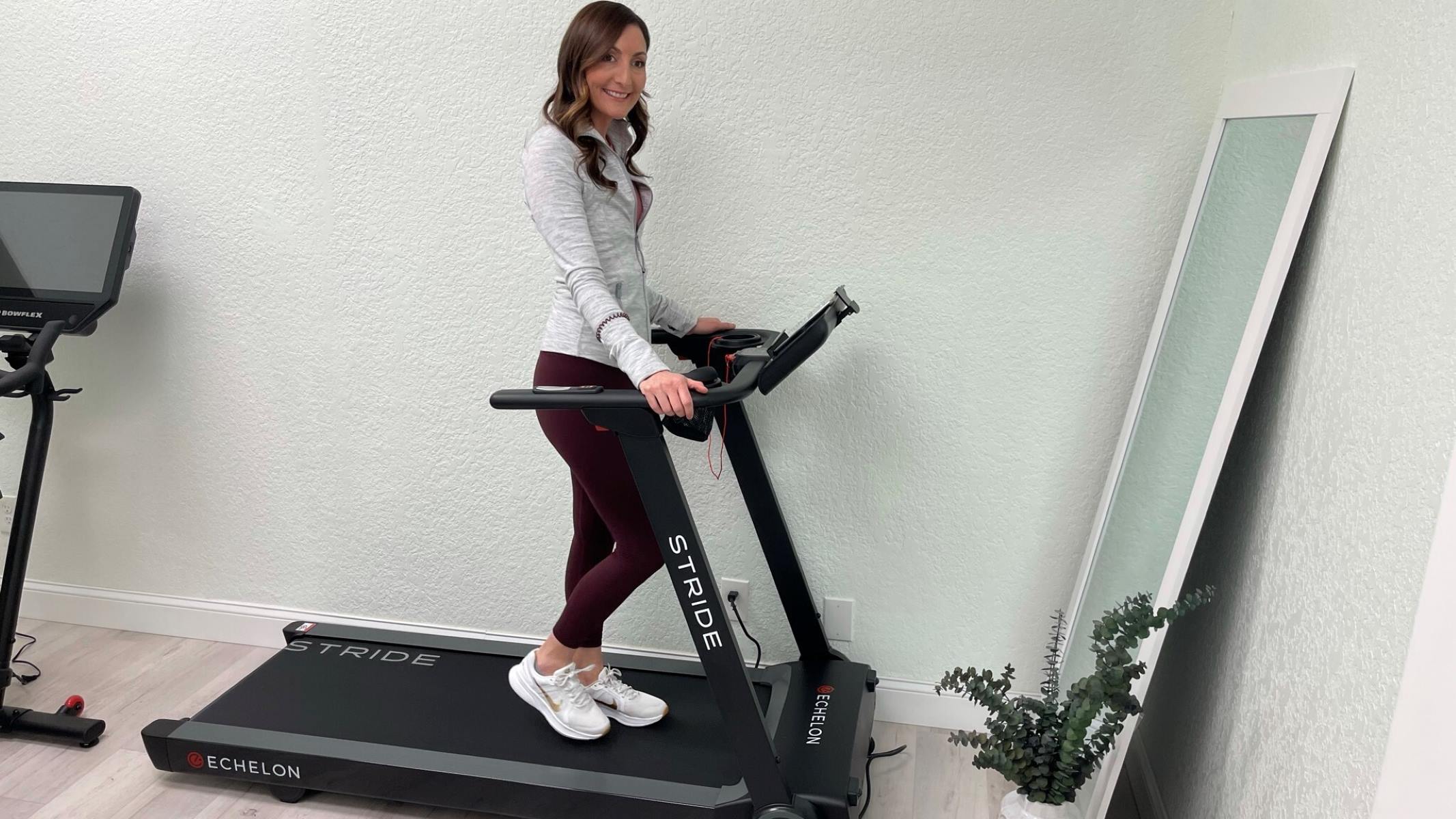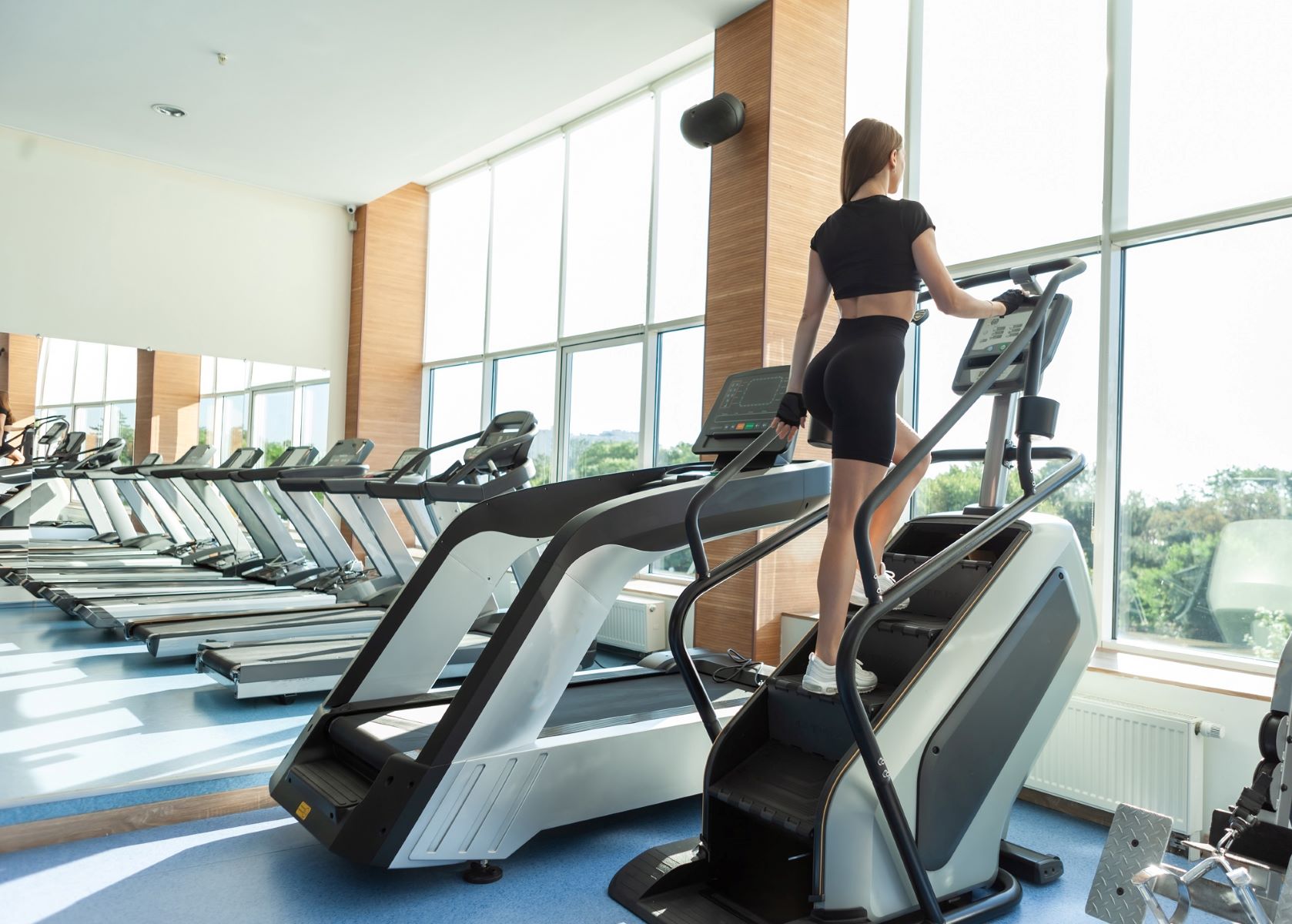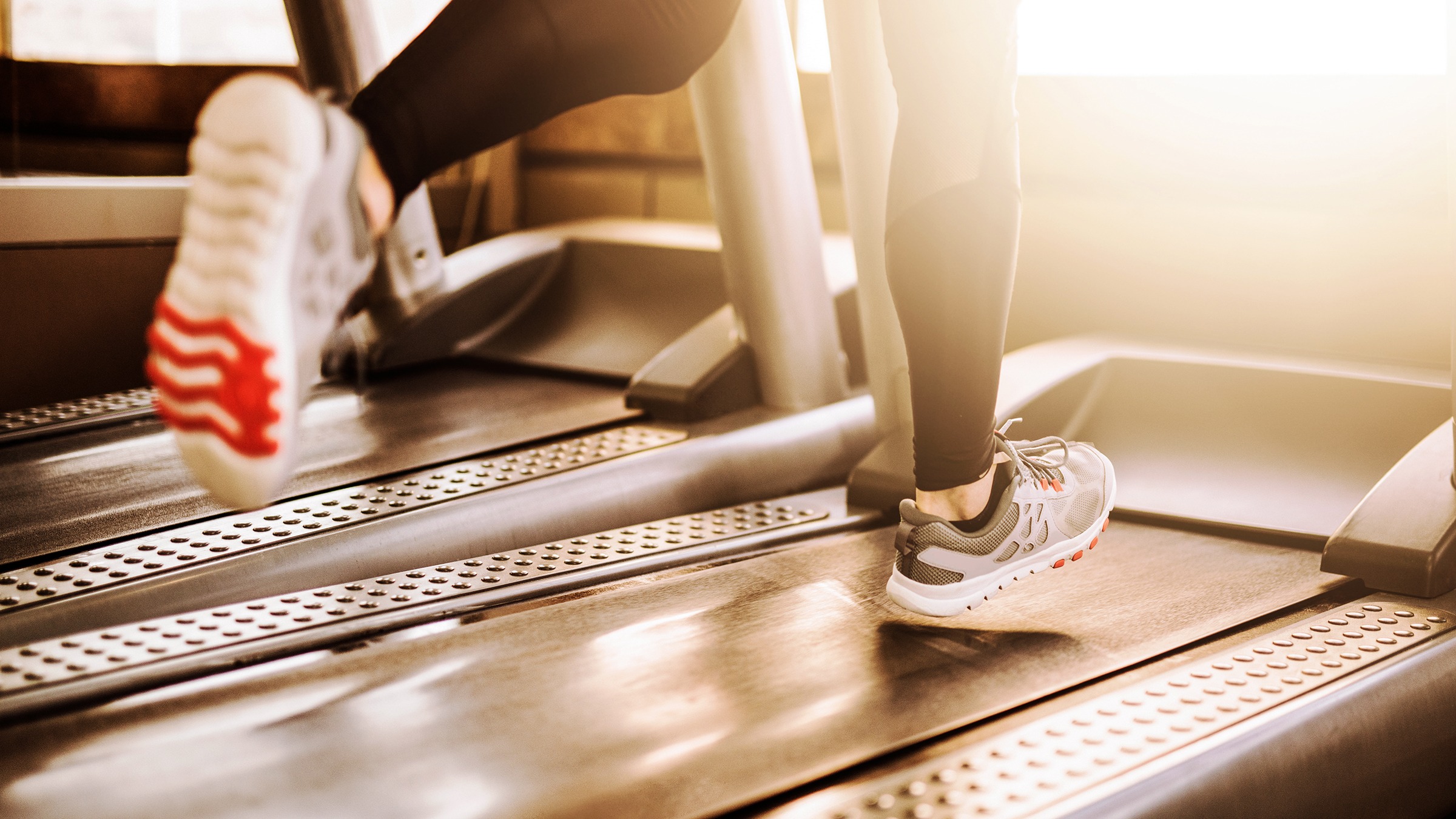

Featured
What Is The Jogging Speed On A Treadmill
Modified: January 22, 2024
Discover the featured jogging speed on a treadmill and how it can help you elevate your fitness routine. Uncover the ideal pace for optimal results and maximum calorie burn.
Introduction
When it comes to cardiovascular exercises, jogging is one of the most popular choices for individuals looking to improve their fitness and overall health. While jogging outdoors can be refreshing, sometimes weather conditions or personal preferences make it difficult to do so. In such cases, a treadmill provides a convenient and efficient alternative.
A treadmill allows you to simulate the motion and intensity of jogging while providing a stable and controlled environment. It offers several benefits, including the ability to monitor your progress, control your speed, and adjust the incline to challenge yourself.
In this article, we will explore the ideal jogging speed on a treadmill, the factors that affect it, and tips for increasing your speed. Whether you are a beginner looking to start a jogging routine or an experienced runner aiming to improve your performance, understanding the optimal speed for jogging on a treadmill can help you achieve your fitness goals.
So, let’s lace up our shoes, step onto the treadmill, and dive into the world of jogging speeds on this versatile exercise machine.
Benefits of Jogging on a Treadmill
Jogging on a treadmill offers numerous benefits for your physical and mental well-being. Here are some of the key advantages:
- Convenience: One of the primary benefits of jogging on a treadmill is the convenience it offers. You can exercise at any time, regardless of the weather conditions or the availability of outdoor running routes. This is especially advantageous for individuals with busy schedules or those living in areas without suitable jogging paths.
- Controlled Environment: Treadmills provide a controlled environment for jogging. You can adjust the speed, incline, and other settings according to your fitness level and goals. This allows for gradual progression and customization of your workouts.
- Joint-Friendly: Running on hard surfaces can place stress on your joints, especially if you have pre-existing conditions or injuries. Jogging on a treadmill, however, offers cushioning and shock absorption, reducing the impact on your joints. This makes it a suitable option for individuals with joint issues or those in the process of rehabilitation.
- Heart Health: Jogging on a treadmill is an excellent cardiovascular exercise that helps improve heart health. It increases your heart rate, enhancing your cardiovascular endurance and strengthening your heart muscles. Regular treadmill jogging can lower your risk of developing heart diseases, improve blood circulation, and optimize the functioning of your cardiovascular system.
- Calorie Burn: Jogging on a treadmill can be an effective way to burn calories and support weight loss. The intensity of the workout, coupled with the ability to monitor your speed and track your progress, makes it easier to create a calorie deficit. Depending on your weight, age, and jogging speed, you can burn a significant number of calories during each session.
- Mental Well-being: Engaging in regular treadmill jogging can have positive effects on your mental well-being. It releases endorphins, the feel-good hormones, which can boost your mood and reduce stress and anxiety levels. The rhythmic motion and focus required during jogging can also promote mindfulness and provide a sense of relaxation.
These are just a few of the benefits that jogging on a treadmill can offer. Incorporating treadmill jogging into your fitness routine can help you achieve your health and wellness goals while enjoying a convenient and controlled exercise environment.
Factors Affecting Jogging Speed on a Treadmill
When it comes to jogging on a treadmill, several factors can influence your speed and overall running experience. It’s important to understand these factors to optimize your workouts and progress effectively. Here are the key factors that can affect your jogging speed on a treadmill:
- Fitness Level: Your current level of fitness plays a significant role in determining your jogging speed on a treadmill. If you are a beginner or just starting your fitness journey, it’s natural to start at a slower pace and gradually increase your speed over time. On the other hand, experienced runners may be able to sustain a faster speed for longer durations.
- Body Composition: Your body composition, including your weight and muscle mass, can affect your jogging speed. Generally, individuals with a larger muscle mass tend to have more strength and power, which can enable them to maintain a faster speed. However, carrying excess weight can also impact your speed, as it requires more effort and energy to move your body.
- Incline Level: The incline level of the treadmill can significantly impact your jogging speed. Running on an incline mimics the resistance of outdoor terrain, requiring more effort from your muscles. Higher inclines can decrease your speed, as it becomes more challenging to maintain a faster pace. Conversely, jogging on a flat surface or a slight incline allows for a faster speed.
- Technique: Your jogging technique can affect your speed and efficiency on a treadmill. Proper running form, including a slight forward lean, activating your core muscles, and maintaining an efficient stride length, can help you maintain a consistent and faster speed. Paying attention to your technique and focusing on proper form can enhance your overall performance.
- Environment: The environment in which you are jogging, including the temperature and humidity in the room, can affect your speed. Warmer temperatures and higher humidity levels can lead to increased perspiration and exertion, causing you to slow down. Additionally, factors like distractions, noise, and ventilation can also impact your jogging speed and overall comfort level.
It’s important to consider these factors while setting your jogging speed on a treadmill. Take into account your fitness level, body composition, incline level, technique, and the surrounding environment. By understanding these factors and making necessary adjustments, you can optimize your jogging speed on a treadmill and achieve your fitness goals effectively.
Ideal Jogging Speed on a Treadmill
The ideal jogging speed on a treadmill can vary depending on individual factors such as fitness level, goals, and personal preferences. However, there are general guidelines that can help you determine a suitable speed to achieve a challenging yet sustainable workout. Here are some considerations to keep in mind:
- Start Slow: If you are new to jogging or have been inactive for a while, it’s important to begin at a comfortable and manageable pace. Start with a slow jog, allowing your body to adjust to the movement and intensity. This initial phase helps build stamina and prevents injuries.
- Listen to Your Body: Pay attention to how your body feels during your treadmill jog. The ideal jogging speed is one that allows you to maintain a conversation without excessive breathlessness. This is known as the “talk test.” If you can comfortably talk while jogging, you are likely at an appropriate speed.
- Use the “Perceived Exertion” Scale: Another way to gauge your ideal jogging speed is to use the “perceived exertion” scale. This scale assesses your effort level on a scale of 0 to 10, with 0 being no effort and 10 being maximal effort. Aim for a perceived exertion level of around 5 or 6, where you feel challenged but still able to sustain the pace.
- Consider Your Goals: Your jogging speed on a treadmill can also be influenced by your specific goals. If your primary objective is to build endurance and increase cardiovascular fitness, maintaining a moderate, steady pace is recommended. If you are looking to improve speed or lose weight, incorporating intervals of higher intensity can be beneficial.
- Consult with a Fitness Professional: If you are unsure about the ideal jogging speed for your specific circumstances, it’s advisable to consult with a fitness professional. They can assess your fitness level, understand your goals, and provide personalized recommendations for a safe and effective jogging speed.
Remember, the ideal jogging speed is unique to each individual and can evolve over time as your fitness level improves. It’s essential to start at a comfortable pace and gradually increase the speed as you become more confident and proficient. Ultimately, finding the ideal jogging speed on a treadmill is about finding a balance between challenging yourself and allowing for sustainable progress.
Tips for Increasing Jogging Speed on a Treadmill
If you’re looking to improve your jogging speed on a treadmill, there are several strategies you can incorporate into your training routine. Here are some helpful tips to help you increase your speed and enhance your overall performance:
- Incorporate Interval Training: Interval training involves alternating between periods of high-intensity running and active recovery. By incorporating intervals into your treadmill workout, you can challenge your body to adapt to different speeds and improve your overall running pace.
- Gradual Progression: Instead of trying to increase your speed drastically in a short period, focus on making gradual progress. Incrementally increase your speed each week or every few workouts to allow your body to adapt and minimize the risk of injury.
- Work on Strength Training: Incorporating strength training exercises into your fitness routine can benefit your overall running speed. Stronger leg muscles can generate more power, allowing you to push off the treadmill surface with greater force.
- Improve Running Form: Pay attention to your running form and technique. Ensure you have proper alignment, maintain an upright posture, and avoid excessive bouncing or shuffling. Engage your core muscles and try to land midfoot to maximize efficiency and increase your speed.
- Vary the Incline: Adding incline variations to your treadmill workouts can mimic outdoor running conditions and help improve your speed. Incorporate uphill sprints or incline intervals to challenge your muscles and boost your overall running performance.
- Focus on Cadence: Cadence refers to the number of steps you take per minute while running. Increasing your cadence can help improve your running speed. Aim for a cadence of around 180 steps per minute or higher by taking shorter and quicker strides.
- Increase Time Spent at Threshold Pace: Threshold pace is the speed at which you can sustain a challenging but comfortable conversation. Gradually increase the duration of your runs at this pace to improve your overall endurance and running speed.
- Stay Consistent: Consistency is key when it comes to improving your running speed. Aim for regular treadmill workouts, allowing for adequate rest and recovery to prevent burnout or injuries.
Remember, increasing your jogging speed on a treadmill takes time and patience. It’s important to listen to your body, progress gradually, and focus on proper form and technique. By incorporating these tips into your training routine, you’ll be well on your way to improving your jogging speed and achieving your fitness goals.
Precautions while Jogging on a Treadmill
Jogging on a treadmill provides a safe and controlled environment for exercise. However, it’s essential to take certain precautions to ensure your safety and minimize the risk of injury. Here are some precautions to keep in mind while jogging on a treadmill:
- Warm-Up and Cool-Down: Prior to starting your treadmill jog, it’s crucial to warm up your muscles and prepare your body for exercise. Perform dynamic stretches and light cardio exercises to increase blood flow to your muscles. Similarly, after your jog, cool down with some static stretches to prevent muscle tightness and promote recovery.
- Use Proper Footwear: Wearing appropriate footwear is vital to support your feet and minimize the risk of foot-related injuries. Opt for running shoes that provide cushioning, stability, and a good fit. Replace your shoes when they start to show signs of wear and tear.
- Start at a Safe Speed: Beginners should start jogging at a comfortable and manageable pace. Avoid setting the speed too high initially, as it can increase the risk of tripping or losing control. Gradually increase your speed as you become more comfortable and confident on the treadmill.
- Stay Hydrated: It’s essential to stay hydrated during your treadmill workout. Keep a water bottle nearby and take small sips at regular intervals to maintain your fluid levels. Dehydration can negatively impact your performance and increase the risk of fatigue or dizziness.
- Pay Attention to Safety Features: Familiarize yourself with the safety features of the treadmill, such as the emergency stop button or safety clip. Knowing how to use these features can help prevent accidents or injuries in case of any mishaps or loss of balance.
- Monitor your Heart Rate: Use the heart rate sensors or a wearable device to monitor your heart rate during your treadmill jog. Pay attention to any abnormal spikes or fluctuations and adjust your speed or intensity accordingly. Consult with a healthcare professional if you have any concerns about your heart rate during exercise.
- Avoid Distractions: Stay focused and avoid distractions while jogging on a treadmill. Talking or texting on your phone, watching videos, or reading can divert your attention and increase the risk of losing balance or form. Create a dedicated workout environment that allows you to focus solely on your exercise.
- Listen to Your Body: It’s essential to listen to your body and respect its limits. If you experience pain, dizziness, or any unusual symptoms, stop exercising and seek medical attention if necessary. Pushing through discomfort or ignoring warning signs can lead to injuries or health complications.
By following these precautions, you can ensure a safe and enjoyable jogging experience on a treadmill. Take the necessary steps to protect your body and prioritize your safety throughout your workout.
Conclusion
Jogging on a treadmill is a convenient and effective way to improve your cardiovascular fitness, burn calories, and enjoy the benefits of running in a controlled environment. Whether you are a beginner or an experienced runner, understanding the ideal jogging speed on a treadmill and implementing strategies to increase your pace can help you achieve your fitness goals.
In this article, we explored the benefits of jogging on a treadmill, including its convenience, controlled environment, and positive impact on heart health and mental well-being. We also discussed the factors that can affect your jogging speed, such as fitness level, body composition, incline level, technique, and the environment.
To increase your jogging speed on a treadmill, we provided you with valuable tips, such as incorporating interval training, gradually progressing, working on strength training, focusing on proper form, varying the incline, and improving cadence. Additionally, we highlighted the importance of taking precautions, including warming up and cooling down, using proper footwear, staying hydrated, paying attention to safety features, and listening to your body.
Remember, the journey to increasing your jogging speed on a treadmill is a gradual process that requires consistency, patience, and self-awareness. It’s crucial to recognize your current fitness level, set realistic goals, and make incremental progress over time. Always prioritize safety, listen to your body, and consult with a fitness professional if needed.
So, lace up your shoes, step onto that treadmill, and embrace the joy of jogging at your ideal speed. Whether you’re aiming to build endurance, improve your running performance, or simply enjoy the physical and mental benefits of jogging, the treadmill can be your reliable companion on this exciting journey toward fitness and well-being.
